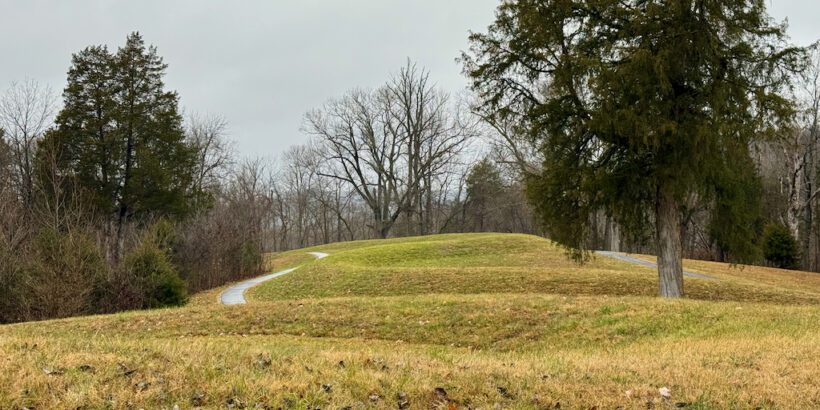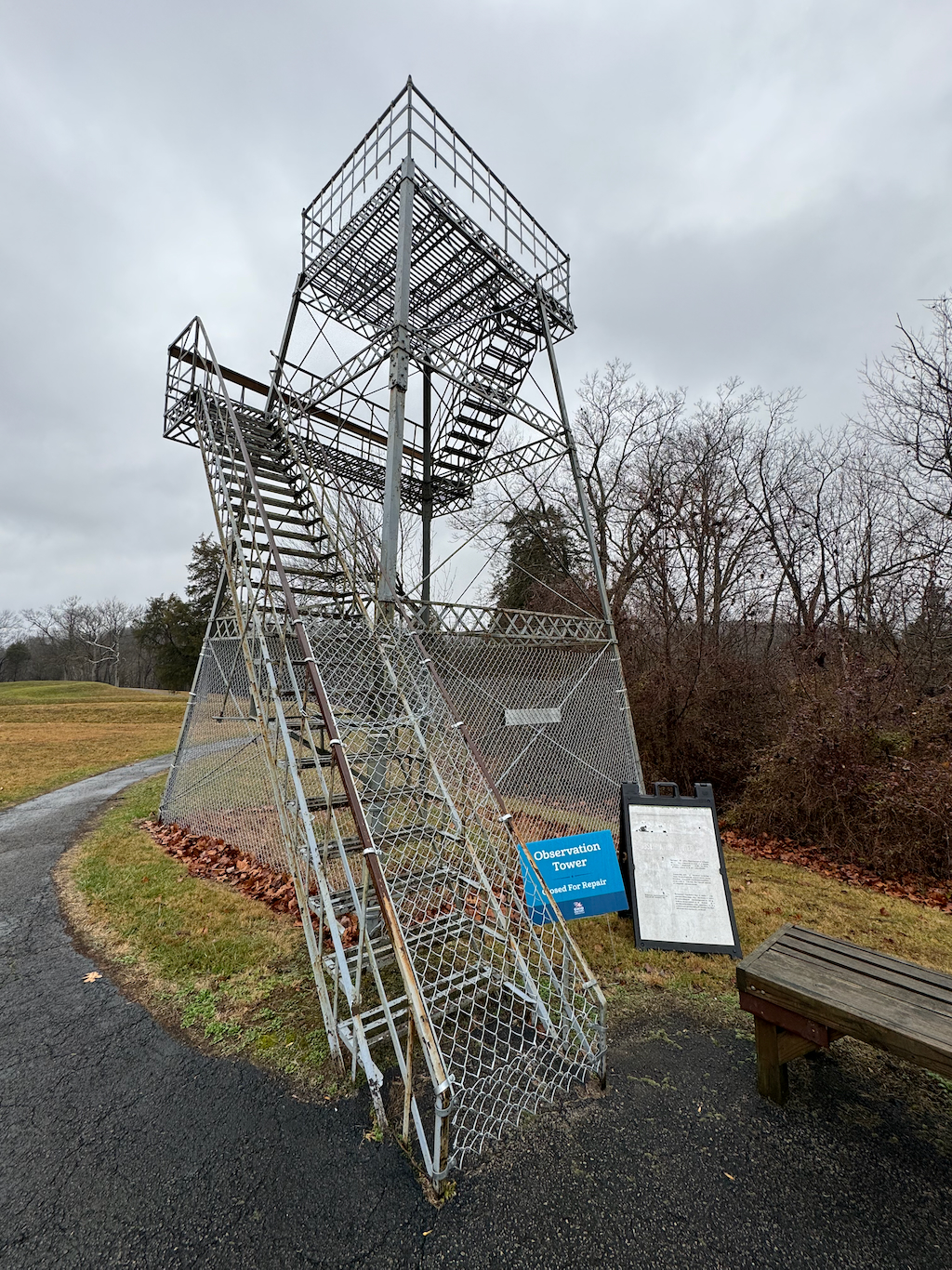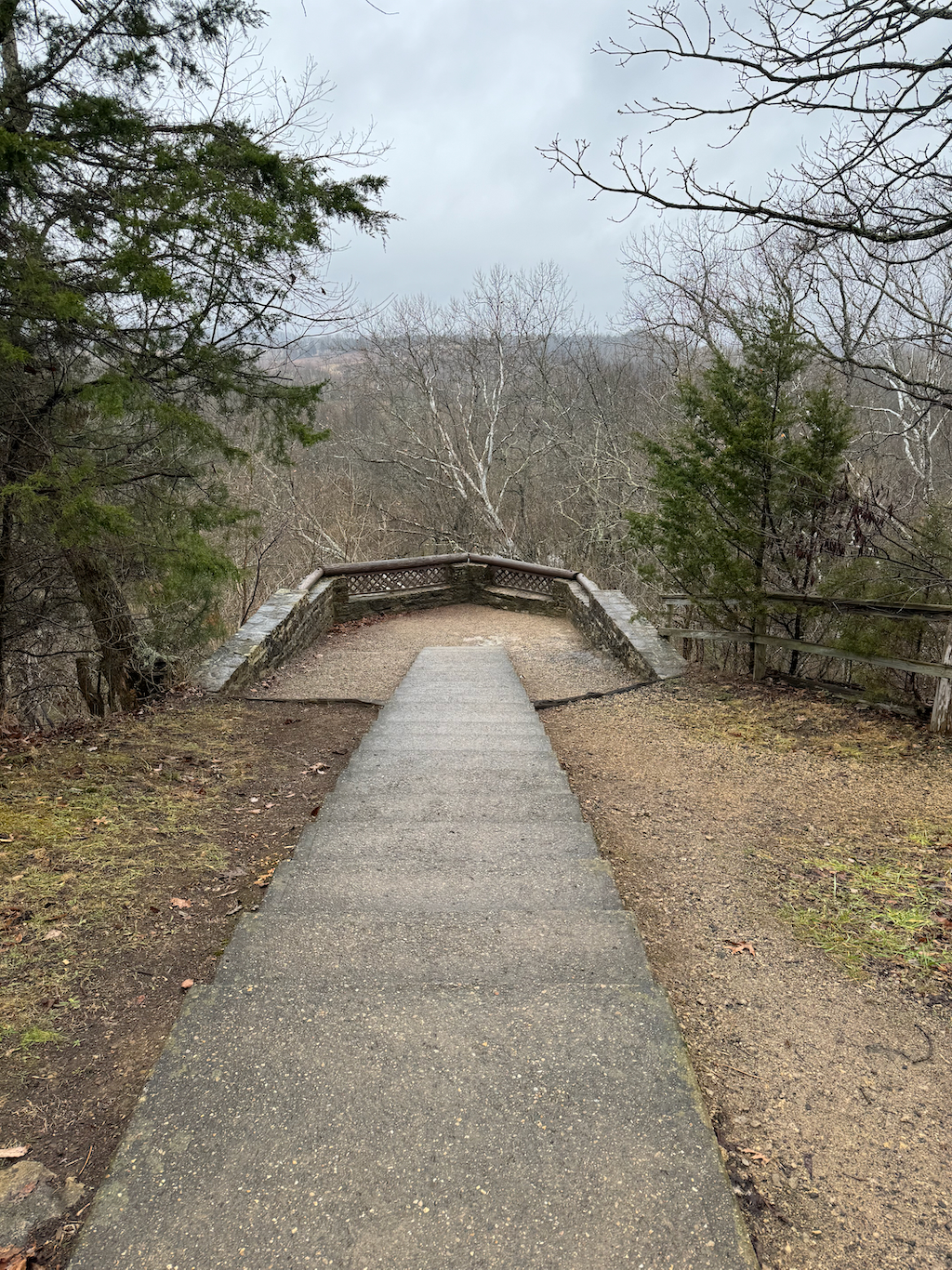For quite some time, Great Serpent Mound has held a coveted spot on my bucket list.
I’ve been fascinated with ancient cultures and to me Serpent Mound has represented one of the most iconic pieces of ancient culture in the Americas but especially within the United States.
On a recent road trip I had the privilege of taking a visit to this place, and below I’ll give you some fascinating insight into its history and also some practical tips for your visit.
Table of Contents
What is Great Serpent Mound?
The Great Serpent Mound is a 1,348 ft. long, prehistoric effigy mound located in southern Ohio. This site holds profound importance for various indigenous communities who have called the area home, and it has been recognized as a National Historic Landmark.
An effigy mound is a mound in the shape of an animal, symbol, or other figure and Serpent Mound is perhaps the largest effigy mound in the world but contrary to what many believe, it is not a burial mound. But more on that below.
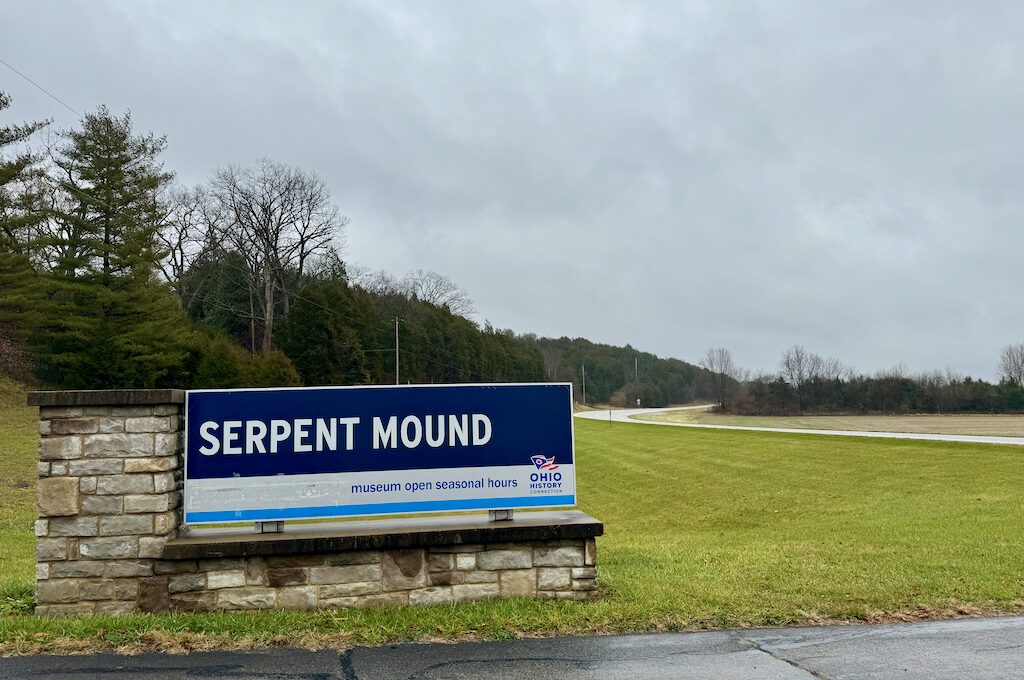
Great Serpent Mound’s background
During the 1880s, the archaeologist Frederic Ward Putnam from Harvard University conducted excavations at Serpent Mound.
However, his efforts reportedly yielded no artifacts within the mound that could be used by archaeologists to attribute it to a specific culture.
Thus, Great Serpent Mound’s age and cultural origin remained subjects of debate among scholars.
The great debate
Some argued that Serpent Mound traced back to the Adena peoples about 2,300 to 3,000 years ago, citing the nearby burial mounds as evidence (they did contain Adena artifacts).
But in 1991, an excavation of the site utilized radiocarbon dating, revealing that the mound was roughly 900 years old. This finding suggested that the Fort Ancient peoples might have been the builders, pointing to a construction period around 1,400 CE.
In 2014, a new development emerged as another team of archaeologists presented fresh radiocarbon dates for Serpent Mound. These findings supported the original theory, suggesting that it was constructed by the Adena culture around 300 B.C.
The dating methods and findings are somewhat tangled, possibly due to the mound undergoing repairs over the years.
It’s conceivable that the initial construction occurred approximately 2,300 years ago but as time wore it down, subsequent societies might have felt compelled to reshape and rebuild, possibly during the Fort Ancient Period.
The link to the cosmos
Fascinatingly, the mound sits atop an “astrobleme,” an ancient impact structure formed by a meteor collision around 248 to 286 million years ago. The entire crater reportedly measures 5 to 9 miles in diameter and Serpent Mound is on the edge of it.
But that’s not the only link it has to the cosmos.
Adding to the allure of this site is its intentional alignment with the summer solstice sunset. The mound’s design ingeniously places the head to perfectly coincide with this solstice moment, while the tail points towards the winter solstice sunrise.
Some even think that the three main curves of the serpent’s body point to the Solstices, Equinoxes, or lunar phases, though it is debatable. If they do, it’s possible the mounds acted as a seasonal “calendar,” perhaps helping the natives keep up with their crops.
There’s also another interpretation that believes the mound was designed to align with the constellation Draco, which again would be a type of celestial calendar. (The star Thuban, also known as α-Draconis, is positioned precisely at the center of the first serpentine fold of the body just below the head.)
These astronomical alignments put Great Serpent Mound with other fascinating ancient works like Stonehenge and the Moai in Easter Island and so it’s no wonder it’s being considered for inclusion on the UNESCO World Heritage List.
A spiritual purpose?
Beyond potential celestial uses, there may have been other purposes for Serpent Mound.
While it was not directly used for burials (there are nearby burial mounds), the possibility exists that it was employed for ceremonies, possibly linked to burials.
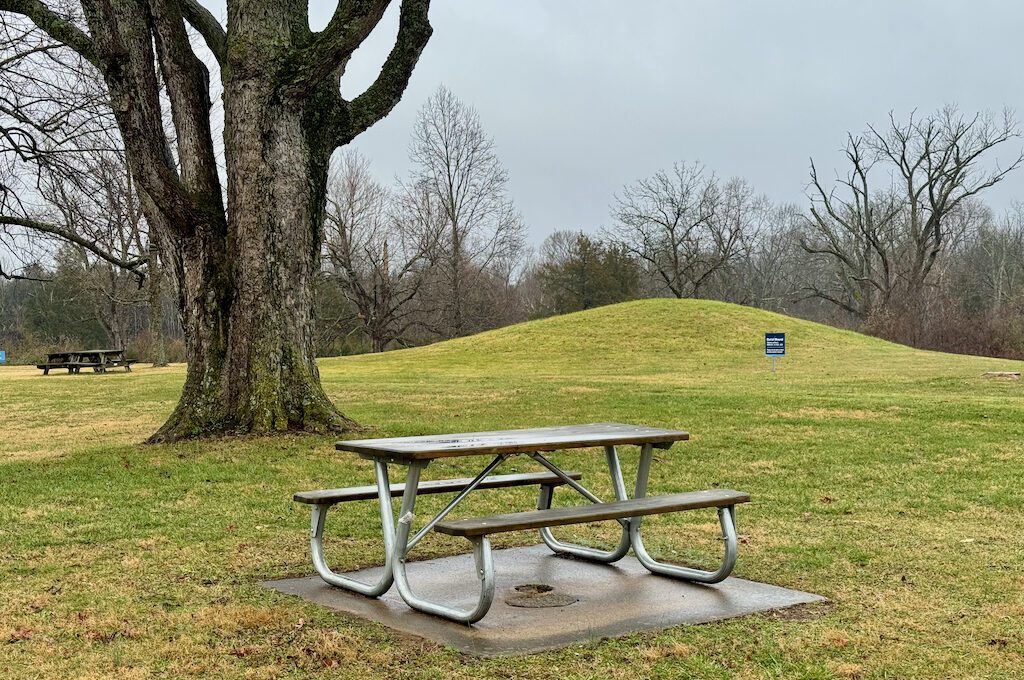
Considering the symbolic significance of serpents in the beliefs of ancient Native Americans, it’s highly probable that the mound held a spiritual purpose.
Lots of different cultures talked about the “great serpent” which was believed to be very powerful and could be called upon for healing or for successful hunting voyages. It came in different forms and one of those forms was the water panther which may be the origins for the Hodag.
So while ongoing scholarly discussions persist, there is no denying the uniqueness and significance of this reptilian earth work, as it offers insights into the ways of ancient America.
Visiting Great Serpent Mound
Our journey through southern Ohio unfolded on a rainy and overcast day, adding an intriguing atmosphere to our visit to the site.

Upon arrival, we found ourselves alone, enjoying the unique experience of having the entire mound to explore without any crowds.
After securing admission in the museum for $8/car, we decided to start our visit with a tour of the on-site museum.
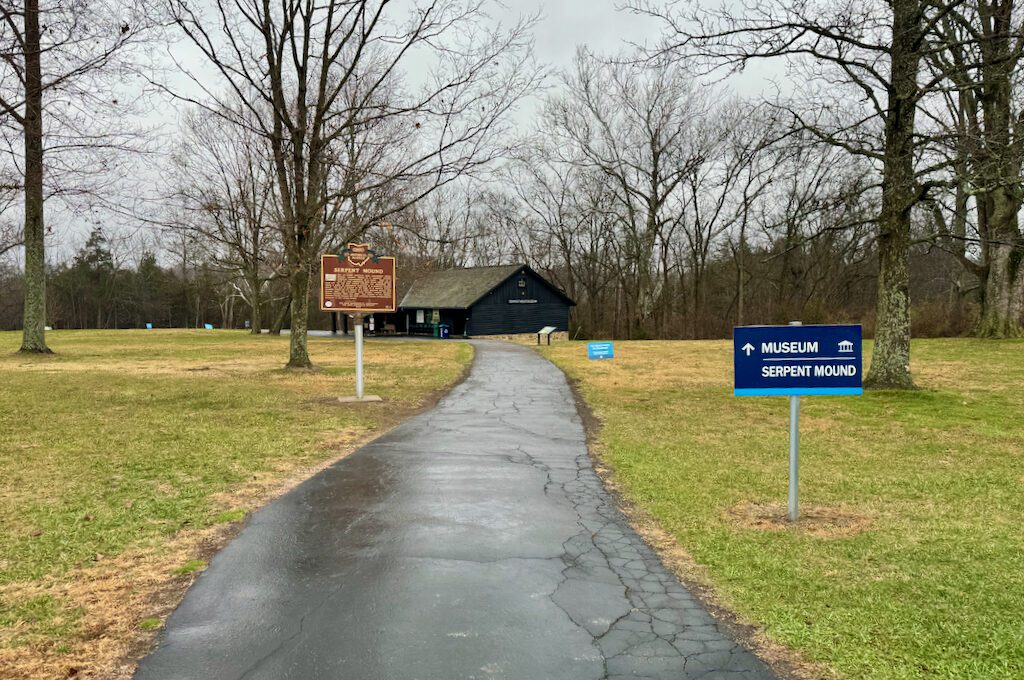
A brief but informative introductory film provided a snapshot of the site’s rich history. The compact museum also housed exhibits delving into the mound’s design, offering some insights into the broader context of these ancient structures.
Among the highlights were Native American artifacts, ranging from intricate necklaces to small tools. Each piece told a captivating story, adding an extra layer of fascination to our exploration.
A visit to the museum won’t eat up much of your time, but be sure to hit the gift shop as it offers an array of interesting souvenirs and literature to explore.
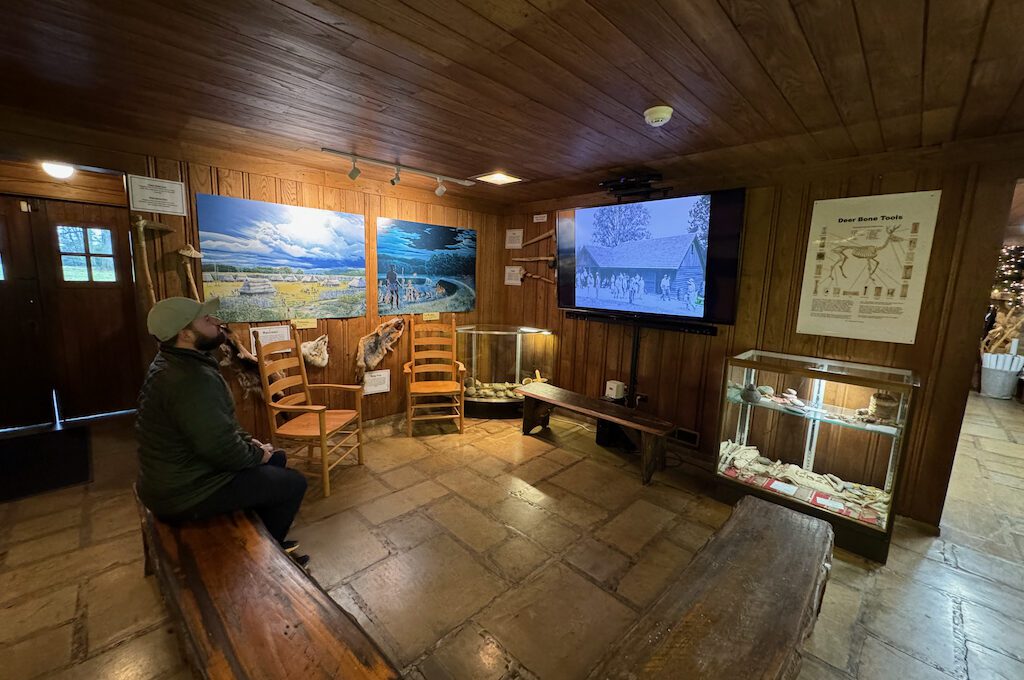
Next on the agenda was to traverse the paved path and explore Serpent Mound.
You can opt for the paved path or venture along a nature trail on the outskirts. Although the trail won’t bring you close enough for a proper view of the mound, it presents you with something else. There’s a serpent shaped rock on the cliff face, directly beneath the serpent’s head! Perhaps this was the inspiration for the serpent mound.
If you’re in the mood for a touch of nature, the trail is a good option; otherwise, the relatively short and easy paved path leads you directly to the mound.
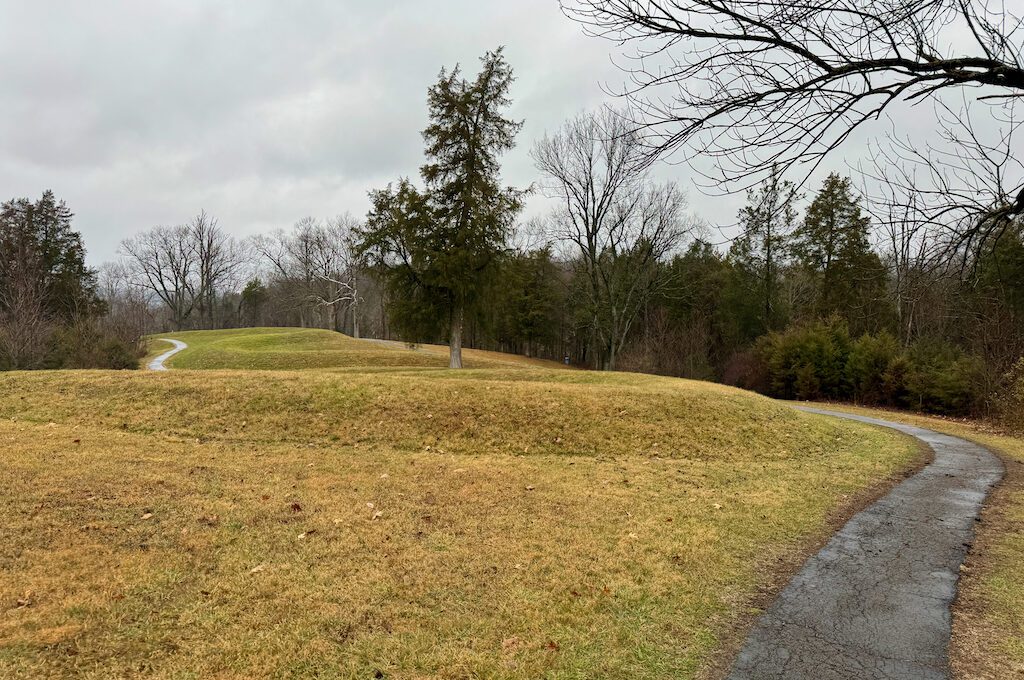
It’s worth noting that fully appreciating the artistic effort behind Serpent Mound can be a bit challenging from ground level. It almost feels like you’re strolling along a golf course at times.
If you want to get more out of your walk consider doing one of the guided tours available on the second Friday of each month. (See all the park hours here.)
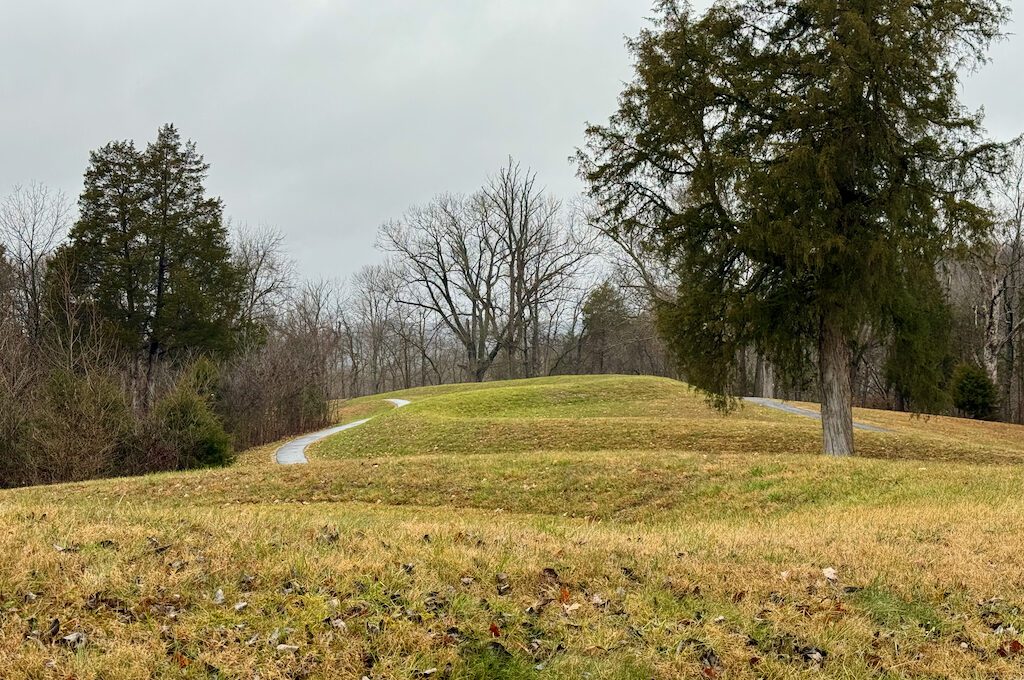
While there is an observation tower, it was out of service during my visit, and it seems to have been so for a while. I can tell that it would have provided a much better sense of the artwork’s scale, so hopefully it gets fixed soon.
Without access to the observation tower, your experience will be limited to circling the mound on the paved path. Don’t be too disheartened; even from ground level, you can still discern some of the serpent’s twists and turns.
Getting a mental picture can be helpful, and some of the signs can assist with that.
Essentially, think of Serpent Mound as a giant snake with a curled tail on one end, a head on the other, and seven twists in between. Near the head, there are two limbs protruding that could be arms or horns, though they are very subtle in real life.

Overall, the snake is about a quarter of a mile long, standing between 3.9 to 4.9 feet tall and spanning 19.7 to 24.9 feet in width. It was likely constructed using a layer of clay and ash and then reinforced with stones.
Experts hold differing views on the symbolic meaning of the head. Some scholars suggest that the oval shape represents an enlarged eye, while others argue it symbolizes an egg or small animal being swallowed by open jaws.
Contemplating the age of this structure sparks a sense of awe, considering the countless Native Americans who may have encountered this site over potentially thousands of years.
The mystery deepens as one ponders the purposes it served—what ceremonies unfolded here, and how many people embarked on pilgrimages to witness this marvel.
Many contemporary American Indians regard Serpent Mound and the surrounding landscape with its burial mounds and unmarked American Indian graves as a sacred site. So as a sacred mound, it’s essential to heed the request not to climb on it and instead stay on the designated path.
A noteworthy discovery along the way is the point near the snake’s head, where there appears to be a missing coil. Through the analysis of magnetic fields in the soil, scientists speculated that the snake’s original design might have been different.
In other words, at some point in history, whether by the hands of the initial builders or a later group, the mound’s design underwent a change. The intriguing part? The exact circumstances and motivations behind this alteration remain shrouded in mystery.
At the end of the serpent’s head, a small set of stairs lead down to an overlook, offering a scenic perspective of Ohio Brush Creek as the end drops down to a steep, natural cliff above the creek.
The elevation of the plateau surprised me, as I always thought of this is flat land. Despite the late fall season with most leaves gone, the view remained picturesque.
After taking in the mound, it was time for us to make our way back and on to truing out some Cincinnati chili.
Final word
I must say, visiting Serpent Mound is undeniably worthwhile. While I lamented the unavailability of the observation deck, making it a bit challenging to grasp the full scope from ground level, the historical significance alone justifies the visit.
Being present at such a site holds its own value. I contemplated the idea of exploring the Nature Trail, which seemed manageable in length and promised a bit of exercise—a potential consideration for a future visit.
Daniel Gillaspia is the Founder of UponArriving.com and the credit card app, WalletFlo. He is a former attorney turned travel expert covering destinations along with TSA, airline, and hotel policies. Since 2014, his content has been featured in publications such as National Geographic, Smithsonian Magazine, and CNBC. Read my bio.

